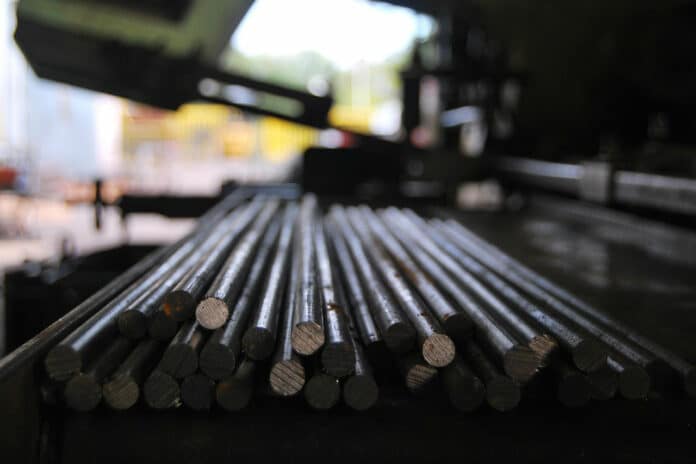Strength and flexibility are two traits that must typically be balanced rather than combined. Engineers at Purdue University and Sandia National Laboratories have developed a new treatment for high-quality steel alloys that can make them both stronger and more ductile at the same time.
Researchers treated T-91, a modified steel alloy that is used in nuclear and petrochemical applications but said the treatment could be used in other places where strong, ductile steel would be beneficial. The treated steel – dubbed G-T91 (or gradient T91) – has a gradient of grain sizes throughout.
The treatment created a “nanolaminate” of ultra-fine metal grains in a region extending from the surface to a depth of about 200 microns. Researchers used compressive and shear stresses to break large grains at the surface of a T-91 sample into smaller grains. A cross-section of the sample shows that grain sizes increase from the surface, where the smallest ultra-fine grains are less than 100 nanometers in size, into the center of the material, where grains are 10 to 100 times larger.
The modified G-T91 sample had a yield strength of about 700 megapascals – a 36% improvement over that of untreated T-91 – and withstood a uniform strain of about 10%. This is a significant improvement over the combined strength and plasticity that can be reached with standard T-91.
“This is the beauty of the structure; the center is soft, so it can sustain plasticity, but by introducing the nanolaminate, the surface has become much harder,” lead author Zhongxia Shang said. “If you then create this gradient, with the large grains in the center and nanograins in the surface, they deform synergistically. The large grains take care of the stretching, and the small grains accommodate the stress. And now you can make a material that has a combination of strength and ductility.”
To check if the nanostructured gradient G-T91 performs better than standard T-91, the team scans electron microscope images of the material at different stages of applied strain. The images show how grains in the nanolaminate of the G-T91 change at increasing intervals of true strain, a measure of plasticity, from 0% to 120%. Normally, the ultra-fine grains near the surface are oriented vertically, but as strain increases, they stretch into a more globular shape, rotate, and, finally, elongate horizontally.
The team has secured funding from the National Science Foundation to investigate the rules governing this movement in the grain boundaries, which could make it possible to understand the intriguing deformation behavior of gradient materials.
Journal reference:
- Zhongxia Shang, Tianyi Sun, Jie Ding, Nicholas A. Richter, Nathan M. Heckman, Benjamin C. White, Brad L. Boyce, Khalid Hattar, Haiyan Wang, Xinghang Zhang. Gradient nanostructured steel with superior tensile plasticity. Science Advances, 2023; DOI: 10.1126/sciadv.add9780
